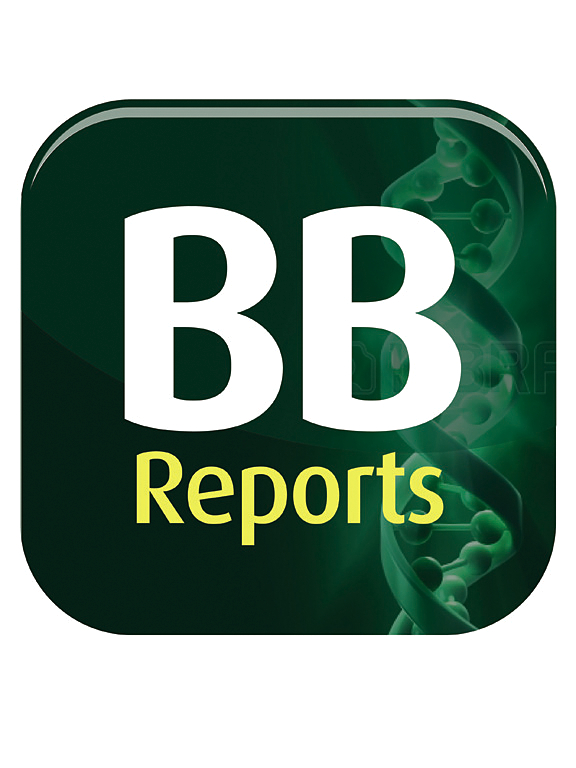卵巢癌患者的肝癌源性生长因子和非编码RNA网络
IF 2.3
Q3 BIOCHEMISTRY & MOLECULAR BIOLOGY
引用次数: 0
摘要
由于诊断较晚和有效的生物标志物有限,卵巢癌(OC)仍然是最致命的妇科恶性肿瘤。肝癌源性生长因子(HDGF)已成为一种与肿瘤进展有关的癌基因,但其在肝癌中的调节和临床潜力仍未得到充分探讨。最近的证据表明,长链非编码RNA (lncRNAs)和microRNAs (miRNAs)可能通过竞争的内源性RNA (ceRNA)网络调节致癌途径。方法与结果采用qRT-PCR方法对50例卵巢癌和50例正常卵巢组织样本进行HDGF、miR-345-5p和LINC00839的表达分析。使用生物信息学工具预测RNA-RNA相互作用并重建ceRNA网络。统计学分析通过ROC曲线检验表达相关性和诊断效能。HDGF和LINC00839在OC组织中显著上调,miR-345-5p下调(p <;0.001)。HDGF的表达与LINC00839呈正相关(r = 0.70),与miR-345-5p呈负相关(r = - 0.58),表明LINC00839利用miR-345-5p抑制HDGF的调控轴。升高的HDGF水平与较大的肿瘤大小、晚期FIGO分期和转移有关。ROC分析显示HDGF血清水平(AUC = 0.88)具有良好的诊断潜力,尽管低于CA-125和HE4。我们的研究强调LINC00839-miR-345-5p-HDGF轴是卵巢癌的关键调控网络。HDGF可能作为疾病进展的临床相关生物标志物,而LINC00839和miR-345-5p是有希望的治疗靶点。这些发现为未来研究基于cerna的OC诊断和治疗提供了基础。本文章由计算机程序翻译,如有差异,请以英文原文为准。
Hepatoma-derived growth factor and non-coding RNA network in ovarian cancer patients
Background
Ovarian cancer (OC) remains the most lethal gynecologic malignancy due to late diagnosis and limited effective biomarkers. Hepatoma-derived growth factor (HDGF) has emerged as an oncogene implicated in tumor progression, yet its regulation and clinical potential in OC remains underexplored. Recent evidence suggests that long non-coding RNAs (lncRNAs) and microRNAs (miRNAs) may modulate oncogenic pathways through competing endogenous RNA (ceRNA) networks.
Methods and results
Fifty ovarian cancer and fifty normal ovarian tissue samples were analyzed for HDGF, miR-345-5p, and LINC00839 expression using qRT-PCR. Bioinformatic tools were employed to predict RNA-RNA interactions and reconstruct a ceRNA network. Statistical analyses examined expression correlations and diagnostic performance via ROC curve. HDGF and LINC00839 were significantly upregulated, while miR-345-5p was downregulated in OC tissues (p < 0.001). HDGF expression correlated positively with LINC00839 (r = 0.70) and inversely with miR-345-5p (r = −0.58), suggesting a regulatory axis where LINC00839 sponges miR-345-5p to derepress HDGF. Elevated HDGF levels were associated with larger tumor size, advanced FIGO stage, and metastasis. ROC analysis revealed that HDGF serum level (AUC = 0.88) has promising diagnostic potential, albeit lower than CA-125 and HE4.
Conclusion
Our study highlights the LINC00839–miR-345-5p–HDGF axis as a key regulatory network in ovarian cancer. HDGF may serve as a clinically relevant biomarker for disease progression, while LINC00839 and miR-345-5p represent promising therapeutic targets. These findings provide a foundation for future investigations into ceRNA-based diagnostics and treatments in OC.
求助全文
通过发布文献求助,成功后即可免费获取论文全文。
去求助
来源期刊

Biochemistry and Biophysics Reports
Biochemistry, Genetics and Molecular Biology-Biophysics
CiteScore
4.60
自引率
0.00%
发文量
191
审稿时长
59 days
期刊介绍:
Open access, online only, peer-reviewed international journal in the Life Sciences, established in 2014 Biochemistry and Biophysics Reports (BB Reports) publishes original research in all aspects of Biochemistry, Biophysics and related areas like Molecular and Cell Biology. BB Reports welcomes solid though more preliminary, descriptive and small scale results if they have the potential to stimulate and/or contribute to future research, leading to new insights or hypothesis. Primary criteria for acceptance is that the work is original, scientifically and technically sound and provides valuable knowledge to life sciences research. We strongly believe all results deserve to be published and documented for the advancement of science. BB Reports specifically appreciates receiving reports on: Negative results, Replication studies, Reanalysis of previous datasets.
 求助内容:
求助内容: 应助结果提醒方式:
应助结果提醒方式:


